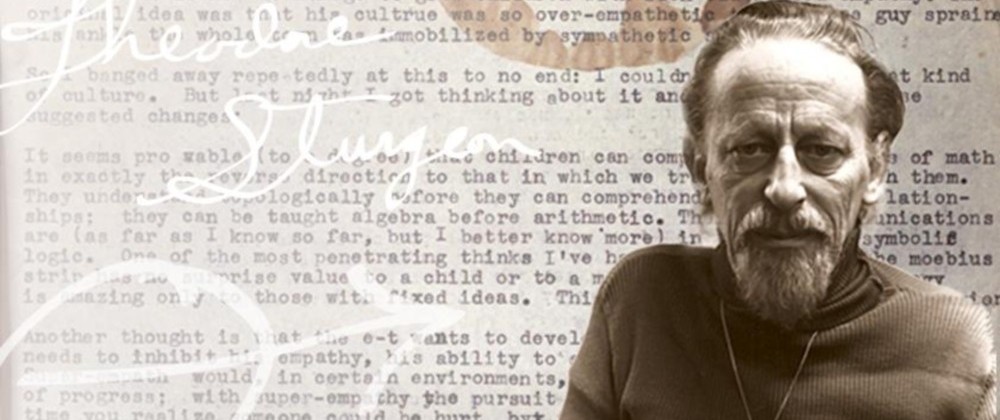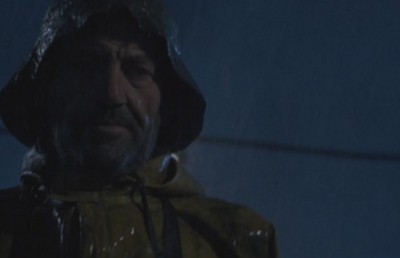Film Writing and “Sturgeon’s Law”

There has been an awful lot of talk lately about the demise of proper film criticism, and the (usually negative) affects of the internet on the viability of the working film critic. Let’s be frank. Even before the internet it was not like there were hundreds of film critics that were earning healthy salaries on their writing alone. The distinction between professional film critic and enthusiast/amateur cannot be based only on whether the writer is paid for their work, simply because payment is not usually forthcoming or not very significant. It has always been and will continue to be difficult to make a living writing about cinema. As pointed out recently by Adrian Martin, the great Algerian film critic Barthélemy Amengual (1919-2005) was rarely paid for his film writing. Hence the real dividing line between professional and amateur is the writing itself. The more pressing concern, or what I would like to briefly touch on here, the pros of internet film writing (since the cons have been amply argued).
Whenever overall quality of art is up for discussion, be it literature, music, painting or film, I am reminded of the great science fiction writer Theodore Sturgeon’s comment after being weary of defending science-fiction from its countless critics: “Ninety percent of everything is crud.” Apparently the first written reference of this was in Venture magazine in 1958, although Sturgeon was said to have first uttered what has now become known as “Sturgeon’s Law” in a talk in 1951. In short Sturgeon said, “Using the same standards that categorize 90% of science fiction as trash, crud, or crap, it can be argued that 90% of film, literature, consumer goods, etc. are crap. In other words, the claim (or fact) that 90% of science fiction is crap is ultimately uninformative, because science fiction conforms to the same trends of quality as all other artforms do.” (Wikipedia)
The same “Law” can be applied to writing that attempts to create critical discourses around these works of art. Have you ever browsed through the film section at your local magazine store, where the serious magazines (Film Comment, Sight & Sound, Cineaste, Séquences, 24 Images, Cinema Scope, Cahiers du cinema) are overwhelmed by fluffy promo magazines like Premiere, Entertainment, Total Film, Tribute, Empire, etc.)? Along with the quality of publication, as Paul Salmon notes in his essay, when it comes to reading about more obscure filmmakers, online is the place to go (outside of your university library of course).
The first complaint people have with the internet is that there is an overwhelming amount of material out there, too much to sift through, although I would guess that even now the amount of film writing on the internet does not come close to matching the amount of paper publications on film that can be found in all the world’s libraries, schools, archives, stores, personal collections, etc. It is just a matter of time before it does, however. The difference is in accessibility. The latter writing is accessible only to those in close proximity to appropriate sources or with the funds to travel, while the internet writing (which is slowly beginning to incorporate the latter) is accessible to anyone with a computer and internet connection. And people connected to a college or university have the added benefit of the school library’s internal electronic database system which allows for many well established, juried film magazines and journals to be available in full text versions, without leaving one’s house. Hence when I think of the benefits of online film writing I am considering not only the writing dedicated exclusively to the internet (blogs, online film journals, magazines, search tools, etc.), but the way the online sphere has opened up the terrain for research based on all scholarly references.
To return to Sturgeon’s Law, the sheer volume of material online is staggering, and yes, 90% of it may be crap or curd, but because of the sheer volume it also means that the remaining 10% of good, worthwhile material is also quite high. In fact I’d say that whatever number this 10% constitutes is more than the equal (10%) proportion of printed film writing available to the average person.
The other criticism against the internet is that because there is so much of it, the issue of weeding out and finding the good stuff is too difficult. I’d say this is a problem only for the lazy and least resourceful of online browsers because there are ample places where one can find links, lists, and summaries of excellent online film writing. The set of research skills that are necessary in finding your sources in a library may be different from those needed for online research…. but they are still necessary. And once a site/source is found, all one needs to do is store it as a bookmark in an appropriate folder. In fact, the beauty of such browsers as Google Chrome or Firefox is the way you can easily and neatly archive these bookmarks in thematic folders and subfolders (for example, by theory, by genre, by writer, by national cinema, by methodology, the permutations are endless…just please be sure to back up those bookmarks!).
The first place I would steer a person overwhelmed by the vastness of the web is a wonderful site/blogspot run by Catherine Grant called Film Studies For Free which is exactly what it sounds like. Caretaker Grant compiles, on an almost daily basis, a running tab on practically every new, worthwhile publication recently made available for free on the internet, with links and hyperlinks. Trust me, one visit and you will find yourself still scouring and reading three hours later! One recent trend that seems to be picking up that I’ve discovered through Grant’s blog is the Video Essay, where a critic presents an analytical comparison between films or some type of close formal analysis leading to a unique interpretation of a film’s meaning. Some of these Visual Essays rely exclusively on the montage crosscutting between relevant scenes from the films in comparison (such as Grant’s own “True Likeness” which compares Peeping Tom and Code Inconnu). Other visual essays (which are usually a nice bite-sized 5-7 minutes) contain (usually) scene specific commentary/analysis accompanying film extracts.
The website Shooting Pictures is one of several dedicated in part to this developing form of film criticism, as is Grant’s Filmanalytical (where you can find the above mentioned visual essay comparing Peeping Tom and Code Inconnu).
The Visual Essay is an example of how internet film writing is not only a supplement to paper publication, but can expand the nature of film criticism in ways which are not possible or efficient in conventional paper publication. The Visual Essay may not be spanking new –DVD commentaries have been providing a similar annotated summary successfully for years, while Tag Gallagher has innovated the Visual Essay on several recent DVD releases, including Three Silent Sternberg Classics and the Rossellini War Trilogy– and some film books have attempted this by including a CD or DVD-ROM with selected clips to accompany the text, but the latter has not caught on for the simple reason that it is clunky switching from book to computer (and of course, you must own the DVD to hear the commentary….and “Sturgeon’s Law” DEFINITELY exists for DVD commentaries and special features). Another recent new form of criticism that distinguishes the internet is the podcast, where one or more critics usually take an issue(s) to task in the good old fashioned way of radio, the difference being they are always available to download and listen at the person’s leisure. A second good place to start for selecting the wheat from the chaff is GreenCine Daily which compiles a daily listing of new DVD releases, theatrical releases, book releases, and a plethora of film links.
The notion of research, leads to the only ‘con’ of internet writing which I’ll mention here: the very nature of online publishing, which is usually driven by immediacy and currency, is geared toward a rapid publishing schedule, usually daily or weekly, and in some cases (as with Offscreen) monthly, which makes it difficult if not impossible to continually produce material that is informed by the sort of research in evidence in more established print journals, which takes weeks, months, and in some cases years. The monthly schedule I have adopted with Offscreen is partly a result of wanting to provide the reader with in-depth essays, reviews and reports which can compare with the rigor and breadth of print publications (in my humble and definitely not impartial opinion!).
As a general point this relates to the distinction between research done by academics, who are comfortably salaried by their University employer or Cultural Funding body, and the more transient work of the film critic, who does not have the luxury (i.e. money/resources) to spend months travelling and conducting research (and of course, and more importantly, neither is the target audience the same for the film critic, film reviewer, and film academic). On the other hand, this level of research is not necessarily required by the film critic (and never espoused by the film reviewer), but rather a solid understanding of film history, theory, and a contextualization of film in its proper context (whether national, industry, or genre). The film critic should also have an understanding of film language (in its general sense). This ‘background’ of proper contextualization (rather than whether they are paid or not) is what really constitutes the “dividing line” between professional film critic and enthusiast/amateur, and I challenge any one to deny that this distinction is not clearly in evidence when reading online film criticism. Just compare an essay on Senses of Cinema or Film-Philosophy with any essay on the dozens of consumer-driven film review sources that normally comes up on an IMDB or Movie Review Query Engine (MRQE) search and you’ll see what I mean. One has proper citation sources, references to other films/filmmakers, other film historians/writers, and the use of proper film description terminology, and the other is filled with plot synopsis, endless descriptions, and phrases such as “I liked it because,” “the setup wasn’t bad,” or “the film had some creepy scenes at the end.”
Clearly sites such as Ain’t it Cool News, Greatest Films, or Reelviews (which granted serve a purpose) can’t be held up as exemplars of online film writing because they do not express the potential of online film writing, but rather (if Sturgeon were alive), the other 90%.














